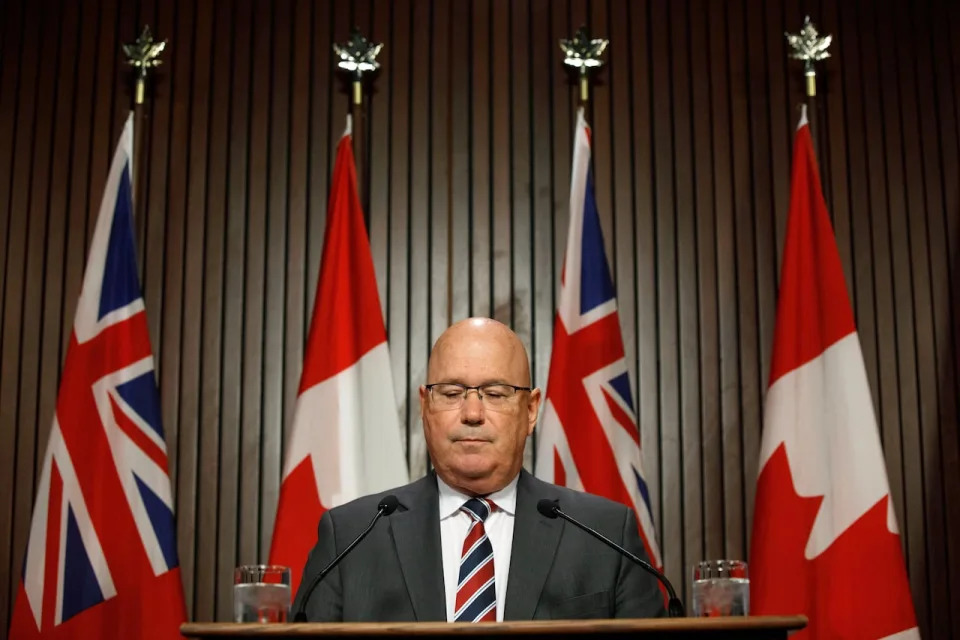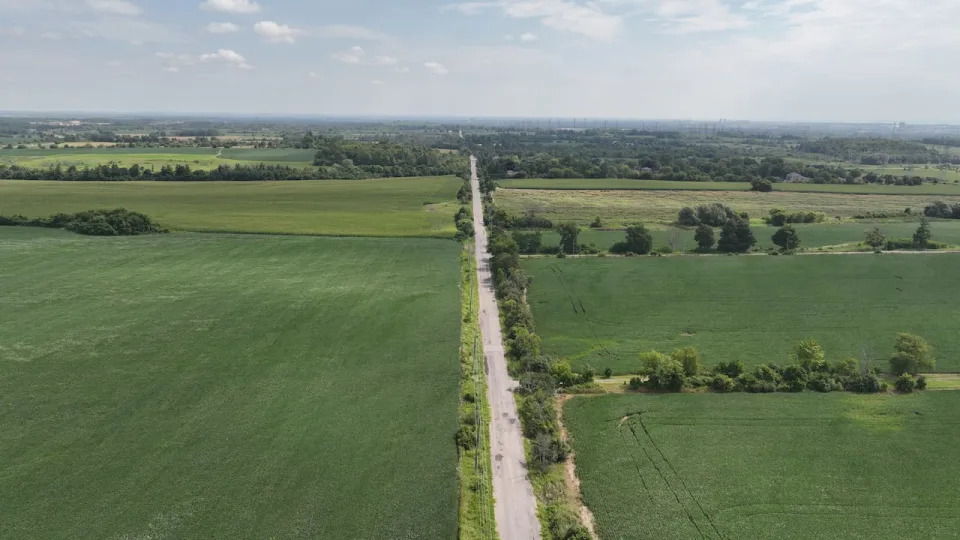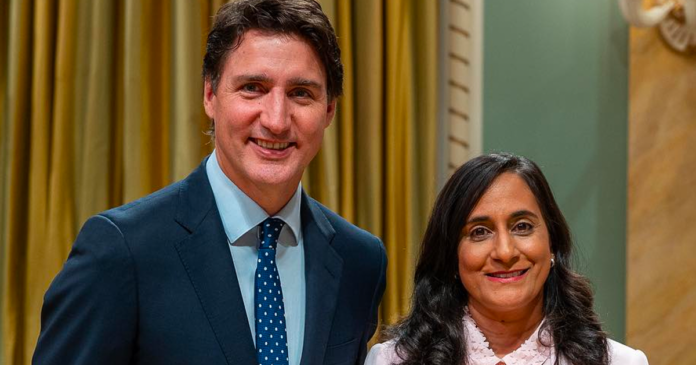CBC
Fri, September 1, 2023

A sign welcomes drivers to the Duffins Rouge Agricultural Preserve, the largest parcel of land the Ford government removed from the Greenbelt last December.
It's been a rough couple weeks for Premier Doug Ford's government.
Two independent, legislative watchdogs — in successive reports released just weeks apart from each other — found major flaws with the province's decision to remove land from the Greenbelt last December to build housing.
On Wednesday, Integrity Commissioner J. David Wake found that Housing Minister Steve Clark chose to "stick his head in the sand" rather than oversee the process of selecting which sites would be removed from the Greenbelt — a vast 810,000-hectare area of protected farmland, forest and wetland stretching from Niagara Falls to Peterborough meant to be permanently off-limits to development.
Instead, Clark left it to his chief of staff at the time, Ryan Amato, whose actions alerted some developers to a potential policy change and resulted in their private interests being improperly advanced, the integrity commissioner found.
That report came just two weeks after Ontario Auditor General Bonie Lysyk's report first revealed how a small group of well-connected developers suggested to Amato many of the sites that would ultimately be removed, providing the landowners with a potential windfall upwards of $8 billion.
Political watchers who spoke to CBC Toronto say the impact of the Greenbelt controversy is putting pressure on the Ford government, and knocking it off its preferred course at a crucial time.
PCs 'caught in a news cycle,' expert says
Mitch Heimpel, director of campaigns and government relations with public affairs firm Enterprise Canada, said the government has been "caught in a news cycle" for the past month that is preventing it from getting its message out.
He said Ford's "big announcement" at the Association of Municipalities of Ontario conference earlier this month "largely got eaten" by stories related to the Greenbelt controversy. The premier announced there the province would extend "strong mayor" powers to 21 smaller cities and launch a $1.2 billion fund to reward municipalities that meet home-building targets.
At recent events, reporters have asked both Ford and Clark flurries of questions about Greenbelt-related issues, no matter the substance of the announcement.
"It's making it hard for them to get positive news out," Heimpel said.

.Minister of Housing Steve Clark speaks during a news conference at Queen’s Park, in Toronto, on Aug. 31, 2023. Clark is facing calls to step down over his handling of the process that led to protected Greenbelt lands being selected for housing development. (Alex Lupul/CBC)
All three Opposition party leaders have repeatedly called over the past few weeks for the resignation of Clark, who has apologized for the "very real flaws" in the process and for failing to oversee his former chief of staff. Ford has said Clark will keep his job and the government will continue to move forward with its agenda to build 1.5 million homes by 2031.
Heimpel said replacing Clark right now would come with a cost.
On the one hand, Heimpel said, it would demonstrate accountability. But it would also slow down the government while a new minister gets up to speed on the many initiatives underway to spur housing construction and change planning rules across the province.
"That could really hamstring the government's agenda in the fall if they were to change horses now," he said.
More shoes could drop, says professor
Christopher Cochrane, associate professor of political science at the University of Toronto Scarborough, said the integrity commissioner's report settled some issues, like establishing that Clark broke ethics rules, while leaving others unresolved.
Those unresolved issues could keep the controversy alive.
"There are unregistered lobbyists who had contracts with companies that would be in contravention of the [Lobbyists Registration Act]. There are mixed reports about whether, in fact, the chief of staff of the housing minister had been taking orders from others," Cochrane said. "There's certainly plenty of opportunity here for a sequel."
That sequel may even come in the form of another integrity commissioner's report from Wake himself.
NDP Leader Marit Stiles, who filed the initial complaint that led to Wednesday's integrity commissioner's report into Clarke, has also requested the commissioner look at Ford's daughter's wedding events, which some developers attended.
The integrity commissioner's office told CBC Toronto Thursday it is still considering whether to launch an inquiry into Ford. Work on that was paused during the Clark probe.

Aerial (drone) views of lush farmland in the Duffins Rouge Agricultural Preserve in Pickering, Ont., the largest parcel of land removed from the Greenbelt last December.
(Patrick Morrell/CBC News)
Another big question is what the RCMP will do. The national police agency is assessing whether or not to conduct an investigation of its own into the Greenbelt land swap after receiving a referral from the Ontario Provincial Police.
Cochrane said it's also possible that the legislature could censure Clark in some way, as the integrity commissioner recommended. Members of Provincial Parliament aren't sitting now but will return on Sept. 25.
Given that the Progressive Conservatives have a majority government, however, it would require members of his own party to vote in favour of any punishment.
"It's ultimately up to the premier to hire and fire the ministers," Cochrane said. "It's the premier's call."
What the government can do pull itself out
The government has already taken some action following the reports.
First, it has pledged to implement 14 of the auditor general's 15 recommendations (the 15th is to reverse the Greenbelt decision, which it has declined to do), and struck a working group to implement them.
Second, it has begun the process of returning two properties in Ajax, Ont., back to the Greenbelt after their landowner listed them for sale. The province says it is willing to reinstate environmental protections on land removed from the Greenbelt if it believes landowners won't be able to meet the government's directive that developers show significant progress on approvals by the end of this year, with construction to begin in 2025.

Ontario Premier Doug Ford delivers remarks at Lakeshore Collegiate Institute in Toronto, on Thursday, Aug. 31, 2023.
Ontario Premier Doug Ford stood by Housing Minister Steve Clark and doubled down on a pledge to build more homes in Ontario amid a flurry of questions about the Greenbelt. (Spencer Colby/The Canadian Press)
Going forward, Heimpel said, the government should be able to continue advancing its policies given their control of the legislature.
"They're going to be able to get things done," he said. "The question is, are they going to be able to get their message out about the things they're accomplishing? That's going to be harder because of these reports."
Heimpel said the government will have to "demonstrate results" by getting "shovels in the ground" and "get[ting] those houses built."
"People have to see progress on the housing crisis. That is ultimately, I think, the measure by which the premier thinks he'll be judged," he said.
Ultimately, it's Ontario voters who will get the final say at the ballot box, although they likely won't have that chance for another three years.
Ontario housing minister apologizes for his role in Greenbelt land swap, keeps job

TORONTO — Ontario's housing minister offered an apology Thursday for the way the government removed land earmarked for development from the protected Greenbelt, a process two legislative watchdogs have said was hasty and flawed.
But Steve Clark will stay on in his job – despite repeated calls by critics for his resignation – after Premier Doug Ford backed the housing minister and defended the province’s Greenbelt plan.
"I want to make it very clear to Ontarians that I'm sorry that we didn't do a better job and that I personally didn't do a better job in terms of the oversight," Clark said at a news conference.
The apology came a day after a scathing report from the province's integrity commissioner, who found Clark violated ethics rules during a process that was marked by "unnecessary hastiness and deception."
Integrity Commissioner J. David Wake found Clark's chief of staff — who resigned last week — was the driving force behind the land swap that benefited certain land developers, and that the minister failed to oversee his staff.
Clark said he accepted responsibility for what happened but did not specify what new measures he would take to improve the situation, other than that the "process" would be different going forward.
"I apologize to Ontarians that I did not provide more oversight to my chief of staff — my former chief of staff — and for this process," he said.
Ontario created the Greenbelt in 2005 to protect agricultural and environmentally sensitive lands in the Greater Golden Horseshoe area from development.
Last year, the province took 7,400 acres of land out of the Greenbelt to build 50,000 homes and replaced it with about 9,400 acres elsewhere.
The move sparked a public outcry and calls for Clark's resignation.
Ford rebuked those calls earlier Thursday when he doubled down on both his Greenbelt plan and support for Clark, who he said will remain part of the team as the government tries to fulfil its goal of building 1.5 million homes over 10 years.
"Minister Clark has a tough job and his goal is to continue building homes," Ford said.
"I saw the report, I read a good chunk of it last night, and, admittedly, the process could have been a lot better – and I agree."
The premier nonetheless said he had "confidence" in Clark.
The integrity commissioner had recommended to the legislature that Clark be reprimanded.
Ford did not say what reprimand Clark might face.
"That's going to go to the legislature and we'll see when we get back into the house in September," he said. The legislature is set to resume on Sept. 25.
The integrity commissioner, like the auditor general in a separate investigation, found the housing minister's chief of staff selected 14 of the 15 sites that were removed from the Greenbelt. He found that neither Ford nor Clark knew what Ryan Amato was up to.
"It may seem incredible that Minister Clark would have chosen to stick his head in the sand on such an important initiative being undertaken by his ministry but I believe that was exactly what he did," Wake wrote.
Auditor General Bonnie Lysyk said in her own recent report that developers who had access to Amato at a developer conference wound up with 92 per cent of the land. The owners of the sites removed from the Greenbelt stand to see their land rise in value by at least $8.3 billion, she found.
Ford said Thursday that he was ultimately responsible for the Greenbelt process.
"The buck stops with me," the premier said, although he didn't explain what that meant or how he or Clark would take responsibility.
The opposition parties said the comments from Ford and Clark fell short.
"The buck's not stopping anywhere," said Interim Liberal Leader John Fraser.
Fraser called for a legislative committee investigation into the Greenbelt land swap.
He said the Liberals have written to the chair of the Standing Committee on Heritage, Infrastructure and Cultural Policy to begin that work. Fraser said he wants Ford to waive cabinet privileges for legislators so they can participate.
New Democrat Leader Marit Stiles said Ontarians deserve better than "fake apologies."
"His words are meaningless without any action to back them up," she wrote in a statement. "Ontarians have lost all trust in this minister and he needs to go."
Green Party Leader Mike Schreiner said the Greenbelt swap is not about housing.
"It's about a government that is denying ordinary Ontarians access to the homes they need because wealthy elite insiders came calling," he said.
All three opposition leaders have demanded Clark resign from his post, as have all the chiefs of Ontario First Nations, who said they were not consulted on the development of lands on their traditional territory.
Ford and Clark have been at the helm of the government's pledge to build 1.5 million homes over 10 years. They have repeatedly said that the 50,000 homes slated for development on land removed from the Greenbelt are needed to achieve that goal.
But the province's housing task force and three regions where the land was removed have said the Greenbelt land was not needed to achieve that target.
The RCMP is reviewing information to determine whether it should investigate the Greenbelt land swap. Ford has said he is confident nothing criminal took place.
This report by The Canadian Press was first published Aug. 31, 2023.
Liam Casey and William Eltherington, The Canadian Press









